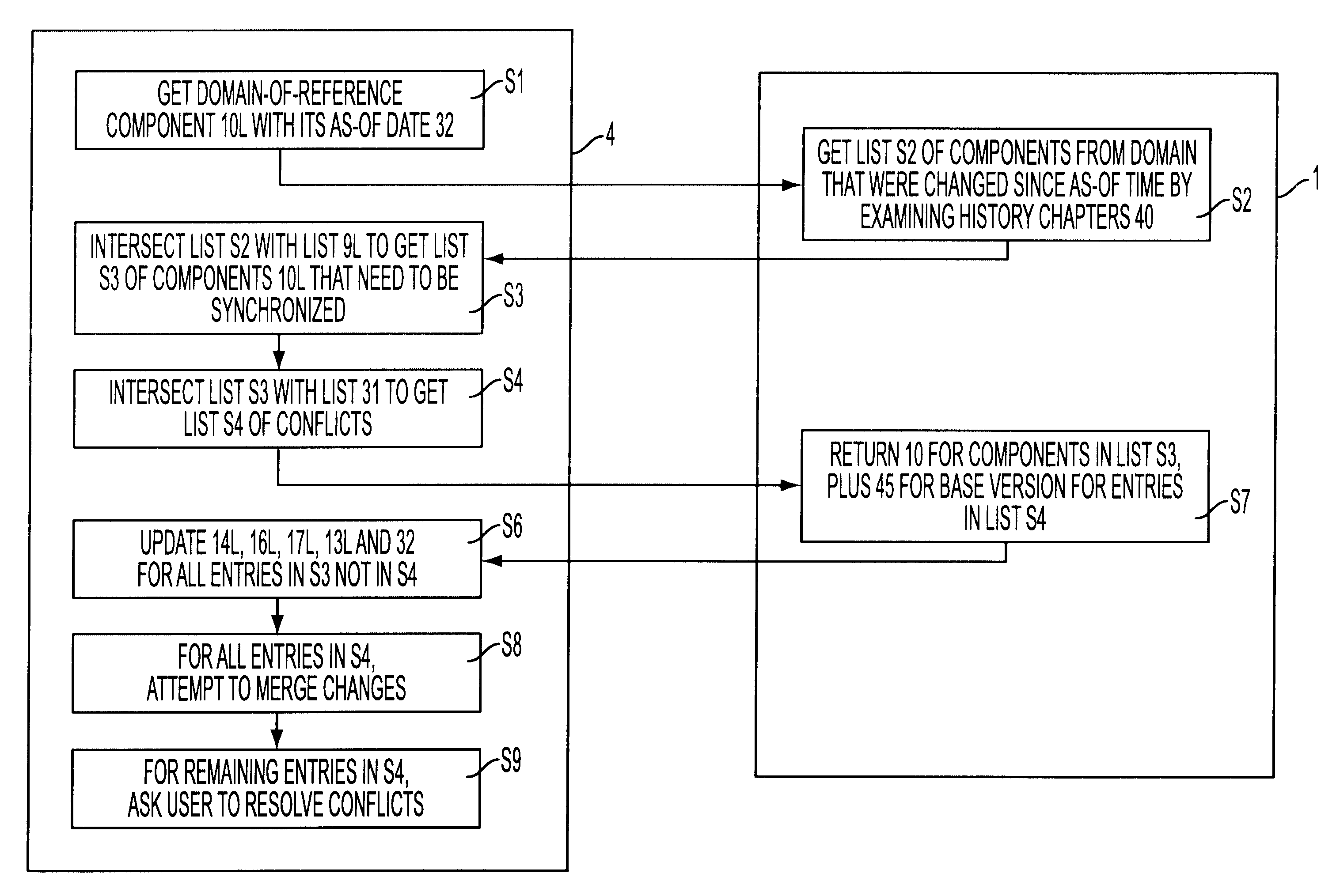System for collaborative engineering using component and file-oriented tools
a collaborative engineering and tool technology, applied in the field of system for collaborative engineering using component and fileoriented tools, can solve the problems of weak support of these workflows, insufficient approach, and achieve the effect of increasing the level of collaboration and high investment in current technologies
- Summary
- Abstract
- Description
- Claims
- Application Information
AI Technical Summary
Benefits of technology
Problems solved by technology
Method used
Image
Examples
Embodiment Construction
ProjectBank is based on a multi-user Component Databank, as described in more detail in the section below entitled "BACKGROUND ON LONG TRANSACTIONS." The master CDB exists on a machine called "the server" (which may in fact be the user's own machine). Each client transaction creates and maintains its own local CDB to serve as a component cache and to buffer uncommitted changes. Since this CDB is unshared and private to a particular client, it is sometimes referred to as the client's "Component Briefcase." His briefcase serves as a hub through which the user obtains model data from the server and transmits changes to the server. These services are provided by intermediary software running on the client machine called the "briefcase manager," which manages his briefcase. The user does not (normally) directly edit components in his briefcase, but such a possibility exists.
All communication between the client and the server is done in terms of components. Most interactions between clien...
PUM
 Login to View More
Login to View More Abstract
Description
Claims
Application Information
 Login to View More
Login to View More - R&D
- Intellectual Property
- Life Sciences
- Materials
- Tech Scout
- Unparalleled Data Quality
- Higher Quality Content
- 60% Fewer Hallucinations
Browse by: Latest US Patents, China's latest patents, Technical Efficacy Thesaurus, Application Domain, Technology Topic, Popular Technical Reports.
© 2025 PatSnap. All rights reserved.Legal|Privacy policy|Modern Slavery Act Transparency Statement|Sitemap|About US| Contact US: help@patsnap.com



